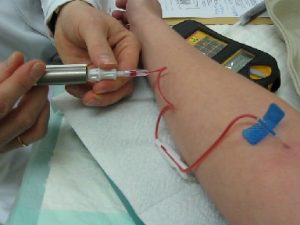Radiopharmaceuticals are medicinal products containing radioactive isotopes. Radiopharmaceuticals can be swallowed, injected or inhaled and are selected based on the type of tissue or organ that will be scanned or treated. In the manufacturing process, radioactive isotopes and organic molecules bond. It is the organic molecules that transport the radioisotopes to specific tissue or organs. Of the more than 10 million nuclear medicine procedures performed in the United States every year, 85% use the radioisotope technetium-99m.
For diagnostics, after the radiopharmaceutical is administered, the patient’s tissue or organ is scanned using a SPECT or PET scanner,1 allowing the doctor to detect changes at the cellular level. Radiopharmaceuticals are helpful in diagnosing various diseases of the blood vessels, bones, brain, kidney and liver as well as detecting heart disease, heart muscle damage and cancer.
Radioisotopes for diagnosis emit radiation that can be detected outside the body by scanners. Radioisotopes for treatment emit all their energy in a small area; therefore, they’re used for localized destruction of cancer cells. They are also used to treat hyperthyroidism and pain as a result of bone cancer and severe arthritis.
Today’s market size shows the amount spent on radiopharmaceuticals globally in 2018 and forecast for 2023. More than 100 radiopharmaceuticals have been developed using radioisotopes produced by nuclear research reactors or cyclotrons. As of the end of 2018, fifty FDA-approved radiopharmaceuticals were used for the diagnosis and treatment of medical ailments in the United States. GE Healthcare, Curium, Lantheus Medical Imaging, DRAXIMAGE, and Pharmalucence are 5 of the 18 manufacturers of these approved products.2
1 SPECT stands for single photon emission computed tomography. PET stands for positron emission tomography. Often these scans are combined with CT or MRI scans to provide more detailed images.
2 Top 5 based on the number of different FDA-approved radiopharmaceuticals the company manufactures.
Year: 2018 and 2023
Market size: $3.95 billion and $5.26 billion, respectively
Sources: “Radiopharmaceuticals/Nuclear Medicine Market by Type (Diagnostic (SPECT (Technetium), PET (F-18)), Therapeutic (Beta Emitters (I-131), Alpha Emitters, Brachytherapy(Y-90))), Application (Oncology, Thyroid, Cardiology) – Global Forecasts to 2023,” MarketsandMarkets Press Release, Accessed February 18, 2019 available online here; “FDA-Approved Radiopharmaceuticals,” Cardinal Health, December 28, 2018 available online here; Phillippe van Put, “What Is Nuclear Medicine?” available online here; “Radiopharmaceutical (Oral Route),” Mayo Clinic available online here; “Radiopharmaceutical Production,” International Atomic Energy Agency available online here; “Nuclear Medicine,” National Institute of Biomedical Imaging and Bioengineering, July 2016 available online here; Haley Hansen, “Niowave Enters $4 Billion Medical Isotope Market,” Lansing State Journal, February 18, 2019, pages 1A and 4A; Dr. Craig Hacking and Dr. Ayush Goel, et. al., “SPECT vs. PET,” Radiopaedia available online here.
Image source: Bionerd [CC BY-SA 3.0], via Wikimedia Commons. No alterations were made to image.

